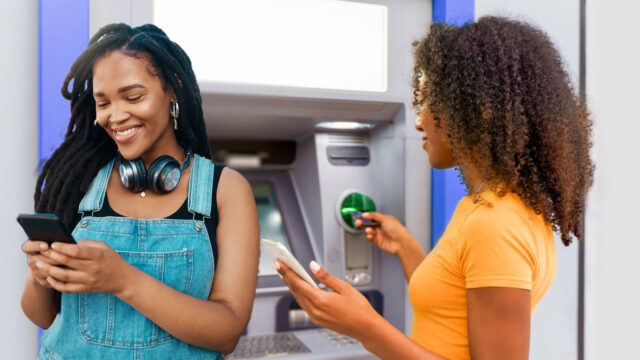Mobile banking vs ATMs: What is your preference?
When choosing between mobile banking and ATMs, it's important to consider your preferences, personal needs, and which features you value the most.

When it comes to banking, there are several convenient ways to access your money and manage your finances. Gone are the days of rushing to the bank before it closed at 4 pm or waiting in long, winding queues. Now, people have two popular options that are easy to use and easily accessible: Mobile banking and ATMs.
Mobile banking refers to the use of a mobile device to carry out multiple, complex financial transactions over the internet. ATM stands for Automated Teller Machine, and it refers to an electronic banking outlet that allows customers to use debit or credit cards and undertake basic transactions without the aid of a banker or teller.
Both ATMs and mobile banking have their own merits and demerits. Ultimately, the choice between the two comes down to personal preference, accessibility, and the level of comfort one has with technology. To help you make an informed choice, here are the pros and cons of both options:
The pros of mobile banking
1. The convenience factor – With your smartphone and the internet, you can access your bank accounts and manage your money from anywhere at any time. There is no queueing or rushing to beat closing time.
2. Flexibility – It is possible to transfer funds between accounts or pay bills on the go with just a few taps on your phone. Real-time banking allows for better financial awareness and control.
3. Enhanced security – Mobile banking apps use features like fingerprint or face recognition, two-factor authentication, and encryption to boost security.
The cons of mobile banking
1. Speed of access may be detrimental – having to go to a physical bank makes one rethink their financial decision while transacting at the touch of a button can lead to poor financial decisions like impulse withdrawal, signing up for a loan, etc.
2. Lack of human interaction – banking, at times, involves complex issues and speaking to a teller or banker face-to-face can be beneficial and comforting as a human offers expert advice and a listening ear.
3. Complexity/mistrust of technology – for the elderly, technology is not easy to use, while for the digitally wary, less tech is their preference, which means there are people who will always opt for traditional banking.
4. Frequent breakdown of service – accessing your account or making a transaction can be rendered impossible by lack of internet, device malfunction or power outage, which can be terribly inconvenient and embarrassing.
Pros of ATMs
1. Widely available– one can access funds at any time, even in areas with limited internet or little electricity coverage.
2. Access to small bills – one can withdraw very small bills and thus be able to pay for petty transactions on the go.
3. Cross-functionality – at a high fee, one can access funds from an ATM that is not their own bank, with some financial providers like Visa having global reach.
Cons of ATMs
1. Transaction limits – the amount of cash that can be withdrawn at once may be restricted, meaning it is not ideal for mega transactions.
2. Security risks – ATM cards can be stolen and used, or the card may be skimmed at the machine, or one may be forced to give up their password and money gets withdrawn.
3. Limited transactions –ATMs, mainly, can only dispense and receive cash, which means for complex transactions, one either has to go to a bank branch or do digital banking.
